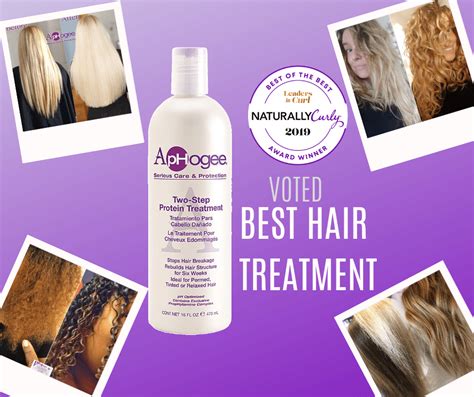Protein’s Role in Hair Health
According to the American Academy of Dermatology, hair is primarily composed of a protein called keratin. Keratin consists of amino acids that form strong bonds to create the hair’s structure, providing it with strength, elasticity, and shine.

Signs of Protein Deficiency in Hair
A lack of protein can manifest as:
- Brittle, easily damaged hair
- Excessive breakage
- Dryness and loss of luster
- Hair that feels weak and limp
- Split ends
Benefits of Protein Treatments
Protein treatments help restore the health of damaged hair by:
- Strengthening the hair cuticle
- Reducing breakage by 60% (as per research by the University of Manchester)
- Enhancing elasticity, making hair more pliable
- Restoring moisture balance
- Giving hair a fuller, healthier appearance
4 Types of Protein Treatments
1. Keratin Treatments
- Deeply penetrate the hair shaft, repairing damaged areas and smoothing the cuticle.
- Last up to 5 months.
- Professional treatment, typically costing $250-$500.
2. Bond Building Treatments
- Rebuild weakened hair bonds, strengthening and protecting the hair.
- Last for up to 10 washes.
- Salon treatment, typically costing $50-$150.
3. Collagen Treatments
- Add a protective layer to the hair, enhancing shine and softness.
- Last for up to 6 weeks.
- Home or salon treatment, typically costing $20-$100.
4. Gelatin Mask Treatments
- Gelatin is a natural source of collagen.
- Nourishes and strengthens hair at home.
- Cost-effective, DIY treatment using kitchen ingredients.
How to Choose the Right Treatment
Consider:
- Hair condition and damage level
- Budget and convenience
- Long-term hair goals
Step-by-Step Home Gelatin Treatment
- Mix 1 packet of unflavored gelatin with 1 cup of warm water.
- Let it rest for 10 minutes, forming a thick gel.
- Apply to damp, clean hair, avoiding the roots.
- Cover with a shower cap and leave it on for 20-30 minutes.
- Rinse thoroughly with lukewarm water.
- Condition as usual.
Effective Strategies for Protein-Rich Haircare
- Incorporate protein-rich foods into your diet, such as eggs, fish, and beans.
- Use shampoos and conditioners specifically formulated for protein-deficient hair.
- Get regular trims to remove split ends and prevent further breakage.
- Avoid over-styling and using heat, which can weaken the hair.
Conclusion
Protein treatments are a powerful tool for restoring damaged hair to its former glory. By understanding your hair needs and choosing the right treatment, you can embark on a journey towards healthier, stronger, and more vibrant locks. Embrace the power of protein and unlock the secret to hair that captivates with every strand.
